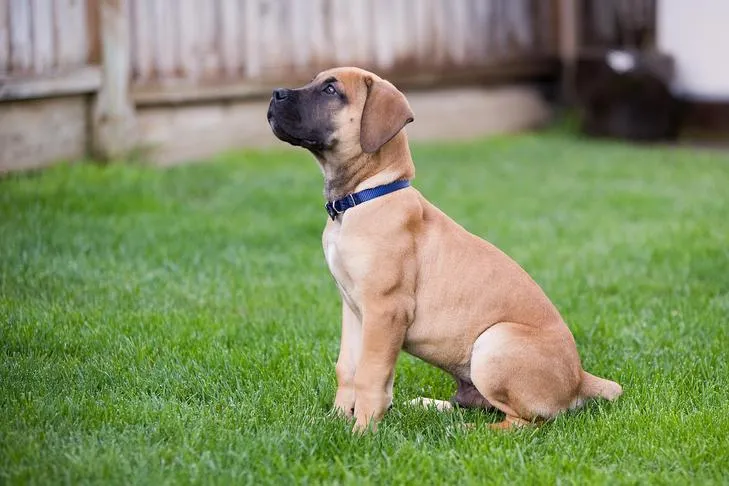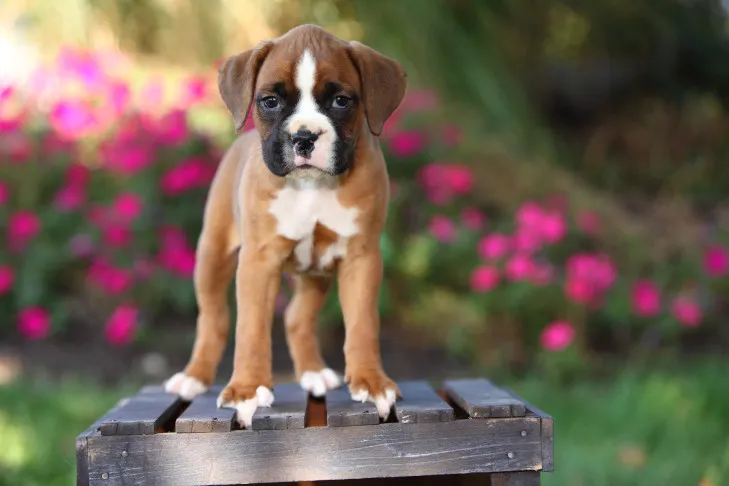Teaching your dog the “stay” command is one of the most valuable lessons you can impart, extending far beyond the show ring into everyday life. A reliably staying dog can make countless situations smoother, from managing greetings at the door to ensuring their safety in busy environments. It fosters good manners and strengthens your bond, allowing for better communication and control. If you’ve been wondering how to teach a dog stay effectively, this comprehensive guide will walk you through proven methods to achieve a rock-solid “stay” with your canine companion. With patience and consistency, your dog can master this essential command, becoming a more obedient and well-mannered member of your household. how to teach your dog come and stay
Understanding the “Stay” Command and Release Cue
The “stay” command is often confused with “wait,” but there’s a crucial difference. “Wait” typically means to pause momentarily, often with the expectation that the dog will move forward when given a general cue or when the handler moves. “Stay,” however, signifies holding a specific position (like a sit or a down) until explicitly released. This means if you command your dog to stay and then leave the room, they should remain in that exact spot until you return and give the release cue.
A release cue is a specific word or phrase that tells your dog they are free from the current command and can move. It’s the signal that ends a behavior, and its consistent use is key to clear communication. You can integrate a release word with any behavior, effectively building an automatic “stay” into positions like “sit” or “down.” Popular release words include “okay,” “free,” or “release.” However, if you choose “okay,” be mindful that it’s a word frequently used in daily conversation, so ensure you use it deliberately to avoid accidentally releasing your dog at the wrong moment. Consistency is paramount: use your chosen release word exclusively to signal the end of a behavior.
 Boerboel puppy sitting calmly in profile in a backyard
Boerboel puppy sitting calmly in profile in a backyard
Step-by-Step: Teaching Your Dog the Release Word
Before your dog can master the “stay” command, they first need to understand what the release word means. This foundational step is critical for successful training and prevents your dog from prematurely breaking their stay. Start in a quiet, distraction-free environment to help your dog focus solely on you and the new cue. Remember to keep sessions short and positive, always ending on a high note.
Follow these simple steps to teach your dog the meaning of their release word:
- Initiate a Basic Command: Ask your dog to perform a known command, such as “sit” or “lie down.”
- Reward and Release Simultaneously: After just one second in the commanded position, calmly offer your dog a high-value treat. As you give the treat, immediately say your chosen release word (e.g., “Free!” or “Okay!”).
- Encourage Movement: After giving the release word, encourage your dog to get up and move. You can gently pat your legs, walk a few steps away, or clap your hands to prompt them. The goal is for them to associate the release word with being allowed to move freely.
- Praise Movement: When your dog gets up and moves after hearing the release word, offer enthusiastic verbal praise. This reinforces that moving at this specific signal is the correct action.
- Repeat Consistently: Practice these steps repeatedly in short bursts. Continue until your dog consistently understands that they are allowed to move only after they hear the release word.
By starting with this small, controlled step, you build a clear understanding for your dog, laying the groundwork for more advanced “stay” training. how to teach your dog to stay and come
Building Duration for a Solid “Stay”
Once your dog understands the release cue, you’re ready to introduce the “stay” command itself and begin building duration. This is where the “three Ds” of dog training come into play: Duration, Distance, and Distraction. For now, we will focus solely on duration, leaving distance and distractions for later stages. It’s crucial to work with your dog in a quiet area, minimizing any potential distractions, and ensure you remain close to them during these initial stages.
Here’s how to gradually build the duration of your dog’s “stay”:
- Give a Position Command: Ask your dog to “sit” or “lie down.”
- Introduce the “Stay” Cue: As soon as your dog is in position, extend your hand straight out in front of you, palm towards your dog, like a stop sign, and clearly say “stay.”
- Short Wait and Reward: Wait just one or two seconds, then calmly give your dog a treat while they are still in the “stay” position.
- Release and Praise: Immediately after the treat, give your release word and praise your dog when they move.
- Gradually Increase Time: In subsequent repetitions, after asking for the “stay,” wait a few more seconds before treating and releasing your dog.
- Build in Small Increments: Continue to build the duration of the stay a few seconds at a time. This slow and steady approach helps prevent frustration and ensures success.
- Multiple Rewards for Longer Stays: Once your dog can consistently hold a “stay” for 10 seconds or more, you can begin to offer multiple treats during the stay. Calmly give a treat every few seconds, repeating your “stay” cue and hand signal each time to remind your dog that the command is still active.
It’s vital to reward the “stay” itself, not the release. If you only reward when your dog moves, you inadvertently make the release more rewarding than holding the position. The goal is for your dog to find remaining in position highly gratifying. Similarly, if you use a clicker for training, click while your dog is in the “stay” position, just before offering a treat. Avoid clicking when they move on the release, as this could confuse them into thinking the click signals the end of the behavior. If your dog seems to think the click means the stay is over, repeat your “stay” cue and hand signal immediately after the click and before the treat to clarify. how to teach your dog to sit stay and come
 Boxer puppy standing attentively on a wooden crate outdoors
Boxer puppy standing attentively on a wooden crate outdoors
Troubleshooting Common “Stay” Challenges
Even with careful training, you might encounter some common hurdles when teaching your dog to stay. One frequent issue stems from handler body language. Dogs are incredibly perceptive, and subtle movements can inadvertently lure them out of position. For instance, if you take a step backward, your dog, accustomed to following you during training, may interpret this as an invitation to move forward. Being aware of your posture and avoiding unintentional cues is crucial.
What if your dog breaks their stay before being released? The most important rule is not to punish them. Often, a broken stay is a sign that you asked for too much too soon, or inadvertently gave a lure. Instead of reprimanding, simply reset the situation. Gently guide your dog back to their original position, repeat the cues, and restart the exercise. You might need to take a few steps back in your training, reducing the duration or distraction level, to ensure your dog experiences success and builds confidence. Patience and a positive attitude are your best tools for overcoming these challenges and reinforcing the “stay” command. how to teach dog stay and come
Adding Distance and Distractions to Your Dog’s Stay
Once your dog can reliably hold a “stay” for at least 30 seconds with good duration, you’re ready to introduce the next two “Ds”: distractions and distance. Remember, when adding a new “D,” it’s essential to lower your expectations for the others. For example, when you begin adding distractions, temporarily reduce the duration of the stay back to just a few seconds, even if your dog could previously stay for two minutes.
Adding Distractions:
Start with low-level distractions, like a soft clap or a subtle movement. As your dog consistently performs the “stay” with these minor disturbances, gradually increase the intensity. This could involve jiggling keys, dropping a small item, or eventually, throwing a soft ball nearby (but not directly at your dog). Once your dog can maintain a “stay” through various distractions, you can then start rebuilding the duration again.
Adding Distance:
Distance often incorporates an element of distraction, so it’s generally best to introduce it last. When you’re ready to add distance, minimize other distractions and again, lower your duration expectations.
Follow these steps to build distance:
- Give the “Stay” Command: Ask your dog to “sit” or “lie down” and give the “stay” cue.
- Take One Step Back: Take a single step away from your dog.
- Return and Reward: Immediately return to your dog and give them a treat while they are still in the “stay” position.
- Release: Give your release word.
- Gradually Increase Distance: Repeat these steps, gradually increasing the distance by one or two steps each time. Slowly work your way up until you can walk across the room or even to the edge of the training area.
Crucially, always return to your dog before releasing them. Releasing your dog from a distance can inadvertently teach them that a certain distance means they can break the stay and approach you. By consistently returning to them before the release, you reinforce that the “stay” is active until you physically return and give the cue. When your dog can confidently manage all three Ds independently, challenge them further by combining them—practicing in different rooms, leaving the room entirely, or taking the training outside. Progress slowly and patiently, and your dog will develop an unwavering “stay” regardless of their environment. teaching a dog to stay off furniture
Teaching your dog to “stay” is a journey that requires patience, consistency, and positive reinforcement. By understanding the distinction between “stay” and “wait,” carefully introducing the release cue, and systematically building duration, distractions, and distance, you empower your dog with a vital skill. This command not only enhances their obedience and manners but also strengthens the communication and trust between you and your canine companion. Embrace the process, celebrate small victories, and soon you’ll have a dog that can hold a steadfast “stay,” making everyday life more harmonious and enjoyable for both of you.
